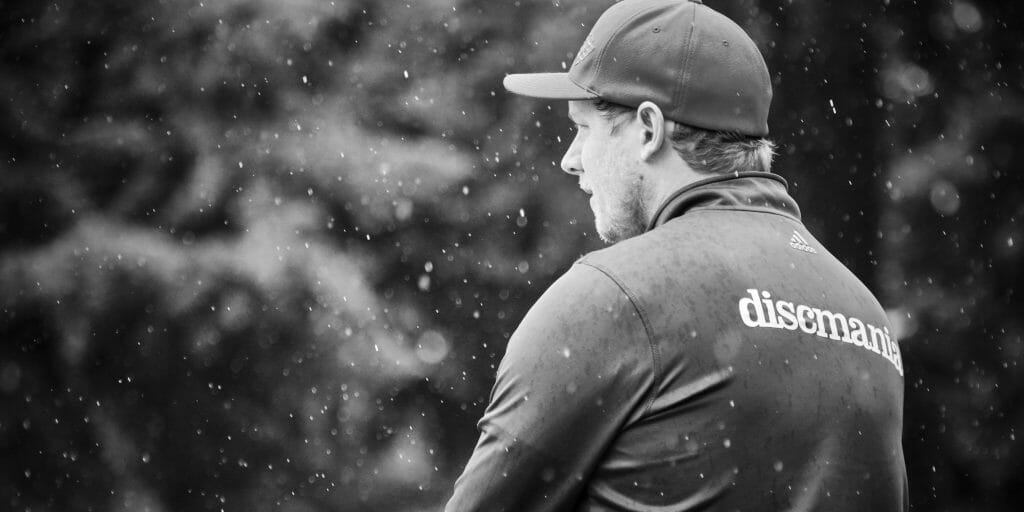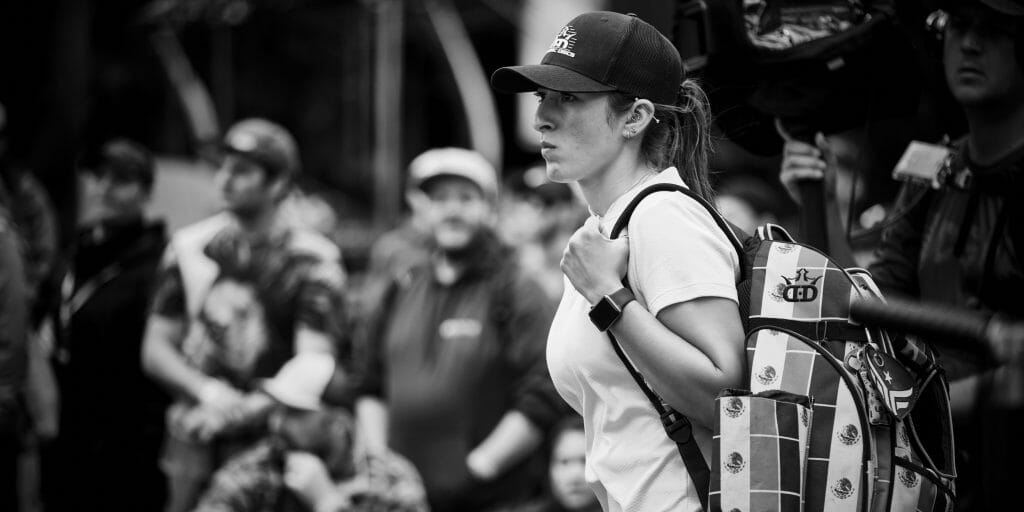What makes Simon so popular?
June 7, 2022 by Christopher Wiklund in Analysis, Opinion with 0 comments

Simon Lizotte has won back-to-back elite level events for the first time in his career and has entered the early conversation for MPO Player of the Year. He has made the top 10 in his last four events and made the podium in his last three events. Everyone is saying that disc golf is better when Simon plays, but what does that mean? Why does Lizotte garner this level of enthusiastic support, and why do people perceive his personal performance to be something that is existentially good for the game?
When Eagle McMahon and Ricky Wysocki eventually come back from their injuries, everyone will be happy to see them again, too, but I doubt that there will be the same sort of near universal glee that has marked Lizotte’s return to tour. Why?
As Josh Mansfield and Charlie Eisenhood pointed out on The Upshot podcast recently, disc golf in general, and professional disc golf specifically, is at a cultural turning point. The phrase “grow the sport” had been a grassroots rallying cry, a chant repeated by the high priests and elders of the game that means and has meant different things to different people. To some it could be an entreaty to locals to turn out to a town hearing and support a local course. To others, it could be encouragement to invite friends and family to go play a round with you. To others still, it was a savvy piece of marketing which could help justify efforts to “professionalize” the game and bring it to a wider audience in order to grow the bottom line.
Many have complained about how the DGPT and associated entities have pushed the game in a more “mainstream” direction, and that this has resulted in a slow but inevitable move away from (and collective amnesia towards) the counterculture roots of the game. Pay to play, dress codes, and golf courses are going to make the game more expensive and less accessible. Others have pushed back against that claim, stating that growth and change is natural and good. They argue, rightly so, that the best should be able to make a good living off of disc golf, and the idea that locals won’t be able to burn one down while throwing DX plastic kept in a shopping bag is a bunch of pearl clutching.
Enter–or perhaps re-enter–Simon Lizotte. Lizotte is clean cut, marketable, and an active capitalist. He is willing to participate in marketing and branding efforts. He is someone who is able to attack and perform well at “spectator friendly” venues. Lizotte likes his beer. He engages with the fans. Lizotte is also freewheeling with his skepticism of institutions, and says things like “success isn’t winning and making money, it’s being happy and having fun.”
As many of Lizotte’s peers have leaned heavily into the “new” culture of disc golf, and more buttoned-down public personas have become the norm, Lizotte is someone who almost seems an anachronism. He has no charitable foundation, no publicly touted big contract, no personal line of discs, and no uber-produced hype videos. He is simply Simon.
Lizotte is good for disc golf because of the things he is not as much as for the things that he is. As production values, ticket prices, expectations for events, and the “professionalism” of the game all increase, Lizotte’s 2022 campaign has been a welcome injection of straight up fun, a blush of excitement and joy in a sport that could become bloodless if it isn’t careful.

Valerie Mandujano’s dominant win at Portland cements her as a Player of the Year candidate alongside Paige Pierce, Catrina Allen, and Kristin Tattar. Mandujano went wire-to-wire with a 20-under par performance, nine shots clear of Ohn Scoggins in second place.
FPO in 2022 has at times felt like an incredibly deep, compelling field and at other times as top heavy as it ever has. Only four players have won Elite Series events this season: Mandujano, Allen, Pierce, and Tattar.
Ella Hansen had put together a nice run of four straight top four finishes at Elite and Silver Series events prior to a 12th place finish at Portland, along a stretch of the tour which is very well suited to her power game. Ohn Scoggins has only missed the top 10 once this season across a wide variety of event tiers and types. Kat Mertsch has had a couple podiums and has finished in the top 10 in 7 of her 10 events. All of these players have popped up as competitors to look for as possible future winners and potential challengers to the top, but none of them have really posed a consistent serious threat to the top of the field.
By the same token, the competitors who have knocked Pierce, Allen, and Tattar off the top spot with any consistency in years past have failed to make a serious impact on this season so far. Hailey King has been a non-factor in her debut season with Innova. Missy Gannon and Sarah Hokom each have Silver Series wins, but like Hansen, Scoggins, and Mertsch, none of these three have posed a consistent serious threat to the top of the board.
Heading into the season, we probably all should have seen Mandujano’s run coming, but she was not necessarily on most folks’ top 5 list. Hopes were high that the other two Europeans – Henna Blomroos and Eveliina Salonen – as well as Gannon, King, and Hansen would be able to make the top three sweat a bit more. The fact is that they haven’t.
Part of that is probably due to the fact that, while we have seen a bit more variety in courses through this part of the season, we are still very much in Big Bomber Szn, and as the tour slowly turns back east, we are likely to see some runs from players like Gannon, Hokom, and King.
Stray Thoughts
Portland and OTB have offered compelling and exciting solutions to what I will now term “The Emporia Problem.” That is, how can events be held on golf courses and not be pure distance competitions? If you have read any of my articles, you know where I stand on the subject of wide open courses. Dustin Keegan and Leonard Muise’s use of the trees between golf fairways, elevation, and tight tee shots have shown the way forward for course design in open spaces. Both course designers did an absolutely top notch job of redesigning two courses which, aside from their massive length, were otherwise quite forgettable.
Both courses used plenty of “artificial” OB for different reasons and degrees of success, but neither course relied on those lines and flags exclusively, instead using the existing natural features to create difficulty in managing both the flight and landing of the disc.
Part of what makes disc golf a promising venture is that courses can and should be installed with minimal impact on the local environment, require relatively little space, and are inexpensive to install. Disc golf courses can and should be sustainable, and as towns and private companies move away from supporting the ecologically disastrous and expensive to maintain traditional golf courses, disc golf courses can and should be considered as alternative uses for the land. Just look at The Preserve and how it has come to be.
Moving forward, designers should look at what Keegan and Muise did in Stockton and Portland as instruction manuals.
Goose Looseness Index Watch: Make no mistake, the Goose is still loose. I repeat, the goose is still loose. However, our index is down to a 7, as Aaron Gossage missed the top 10, landing in 12th. That being said, baskets should be prepared for increased downy conditions. The goose remains on the loose, despite attempts by west coast authorities to restrain the goose.